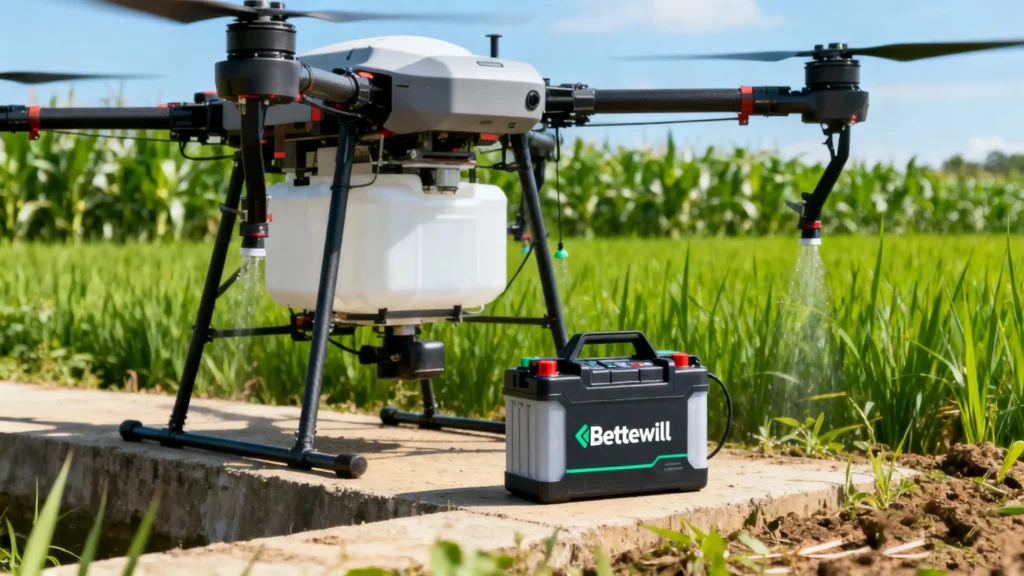Getting to Know Lipo Battery
Lipo drone battery, short for Lithium-Polymer battery, is a common power source for drones. It consists of thin, flexible cells wrapped in a lightweight casing. Its working principle relies on the movement of lithium ions between positive and negative electrodes. Due to its excellent performance, it is widely used in various types of drones, from consumer hobby models to small commercial ones.
Unique Advantages of Lipo Drone Battery
(1) High Energy Density
Energy density refers to the amount of energy a battery can store per unit weight. Compared with traditional nickel-cadmium or nickel-metal hydride batteries, Lipo battery has much higher energy density. This means it can provide longer flight time for drones without adding extra weight, which is crucial for extending drone missions.
(2) Excellent Discharge Performance
Discharge rate, often expressed as a “C-rating”, shows how fast a battery can release energy. Drones need strong instant power for take-offs, rapid turns, and climbs. Lipo battery excels in high-current discharge, with many models having a discharge rate of 20C to 50C. This ensures drones get the necessary power to perform various flight maneuvers smoothly.
(3) Lightweight Design
Weight is a key factor affecting drone flight performance. A heavy battery will reduce a drone’s agility and increase energy consumption. Lipo battery has a lightweight structure—its flexible cells and thin casing make it much lighter than other batteries of the same capacity. This helps drones maintain better flight stability and longer endurance.
Interpretation of Key Performance Indicators
(1) Voltage Parameters
- Nominal Voltage: The average voltage a lipo drone battery outputs during normal use, usually 3.7V per cell for Lipo batteries.
- Full Charge Voltage: The voltage when the battery is fully charged, typically 4.2V per cell.
- Cut-off Voltage: The minimum safe voltage before the battery stops working, about 3.0V per cell.
- Over-discharge Voltage: A voltage lower than the cut-off voltage, which can cause permanent damage to the battery.
- Storage Voltage: The ideal voltage for long-term storage, around 3.8V to 3.85V per cell.
- Operating Voltage Range: The voltage span between full charge and cut-off voltage, ensuring stable power supply for drones.
(2) Capacity and Discharge Rate
Capacity, measured in milliampere-hours (mAh), indicates how much energy the battery can store. A higher capacity means longer drone flight time—for example, a 3000mAh Lipo drone battery can power a small drone for about 15 to 20 minutes. Discharge rate, as mentioned earlier, determines the maximum current the battery can provide. A 30C discharge rate for a 3000mAh battery means it can deliver up to 90A (3000mAh × 30C ÷ 1000) of current, meeting the power needs of high-performance drones.
(3) Cycle Life
Cycle life refers to the number of complete charge-discharge cycles a battery can undergo before its capacity drops to 80% of the original. Most Lipo batteries have a cycle life of 200 to 300 cycles. A longer cycle life reduces the frequency of battery replacement, thus lowering the overall use cost for drone users.
Key Points for Safe Use and Maintenance
(1) Charging Precautions
Always use a dedicated Lipo drone battery charger. First, check the charger’s settings to match the battery’s voltage and capacity. Connect the battery to the charger correctly—ensure the positive and negative terminals are aligned. Never leave the battery unattended while charging, and stop charging immediately if the battery becomes hot or swells. Avoid overcharging, as it can lead to lipo drone battery damage or even safety hazards.
(2) Discharge Management
Monitor the drone’s battery level during flight. Land the drone promptly when the battery level drops to 20% to 30% of its capacity. Over-discharging breaks down the battery’s internal structure, shortening its lifespan and increasing the risk of leakage or fire. Do not use the lipo drone battery if it shows signs of low power, such as sudden drops in flight performance.
(3) Storage Requirements
For short-term storage (1 to 2 weeks), keep the lipo drone battery at 50% to 60% of its capacity. For long-term storage (more than 2 weeks), adjust the capacity to 30% to 40%. Store the battery in a cool, dry place with a temperature between 10°C and 25°C. Avoid direct sunlight, high humidity, or extreme temperatures. Use a fireproof storage bag to prevent accidents in case of battery failure.

Popular Lipo drone Battery Products on the Market
- Brand A 3S 3000mAh Lipo Battery: Nominal voltage 11.1V, discharge rate 30C, weight 220g, suitable for small hobby drones. Price: Around $25.
- Brand B 4S 5000mAh Lipo Battery: Nominal voltage 14.8V, discharge rate 25C, weight 380g, ideal for commercial photography drones. Price: Approximately $45.
- Brand C 2S 1500mAh Lipo Battery: Nominal voltage 7.4V, discharge rate 40C, weight 85g, designed for mini racing drones. Price: About $18.
Outlook on Future Development Trends
In the future, Lipo battery will continue to improve in energy density. Researchers are exploring new electrode materials to increase storage capacity, aiming to extend drone flight time further. Safety will also be a key focus—new casing materials and built-in protection circuits will reduce the risk of fire or leakage. Additionally, advancements in manufacturing technology may lower production costs, making high-performance Lipo drone batteries more affordable for a wider range of users.

